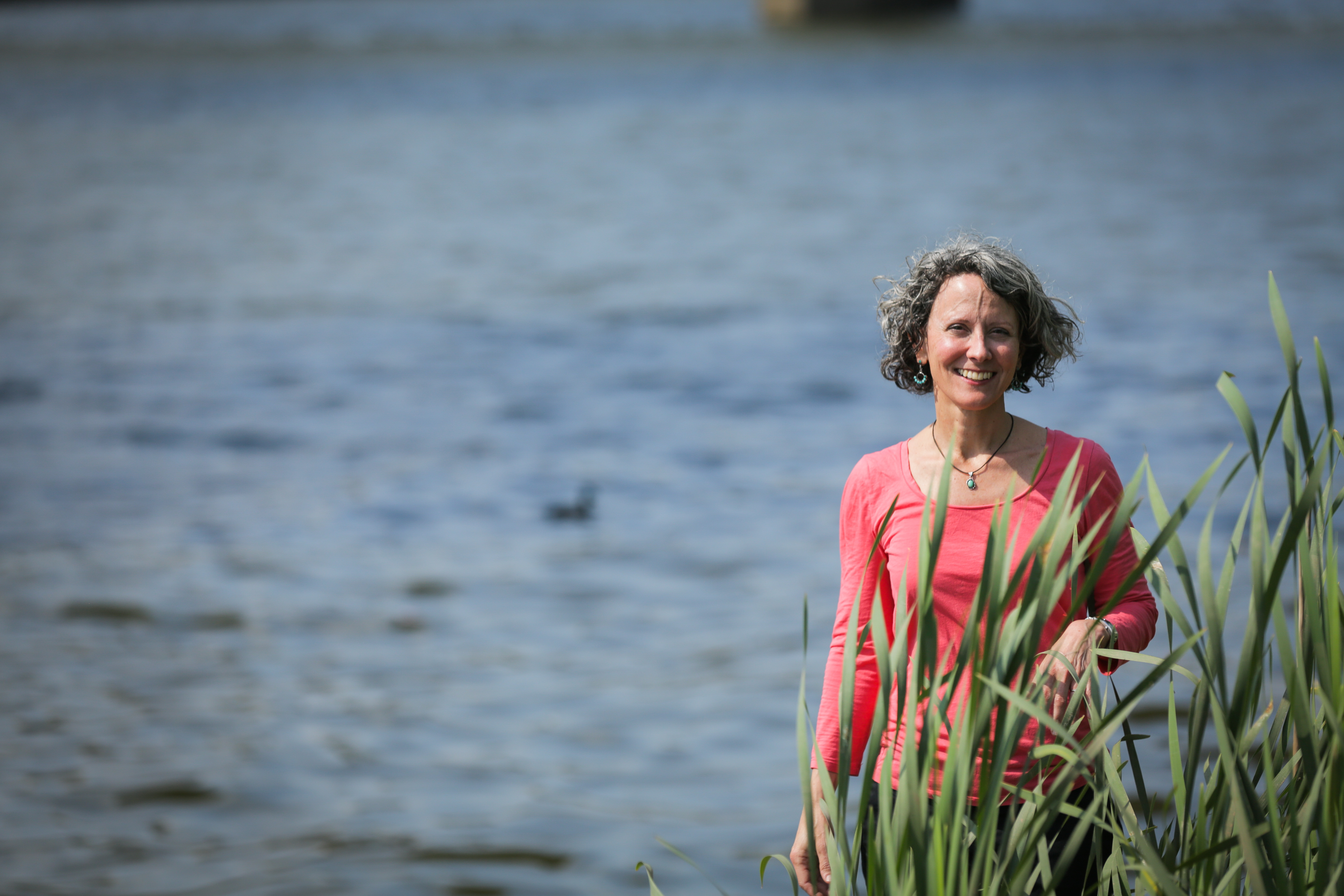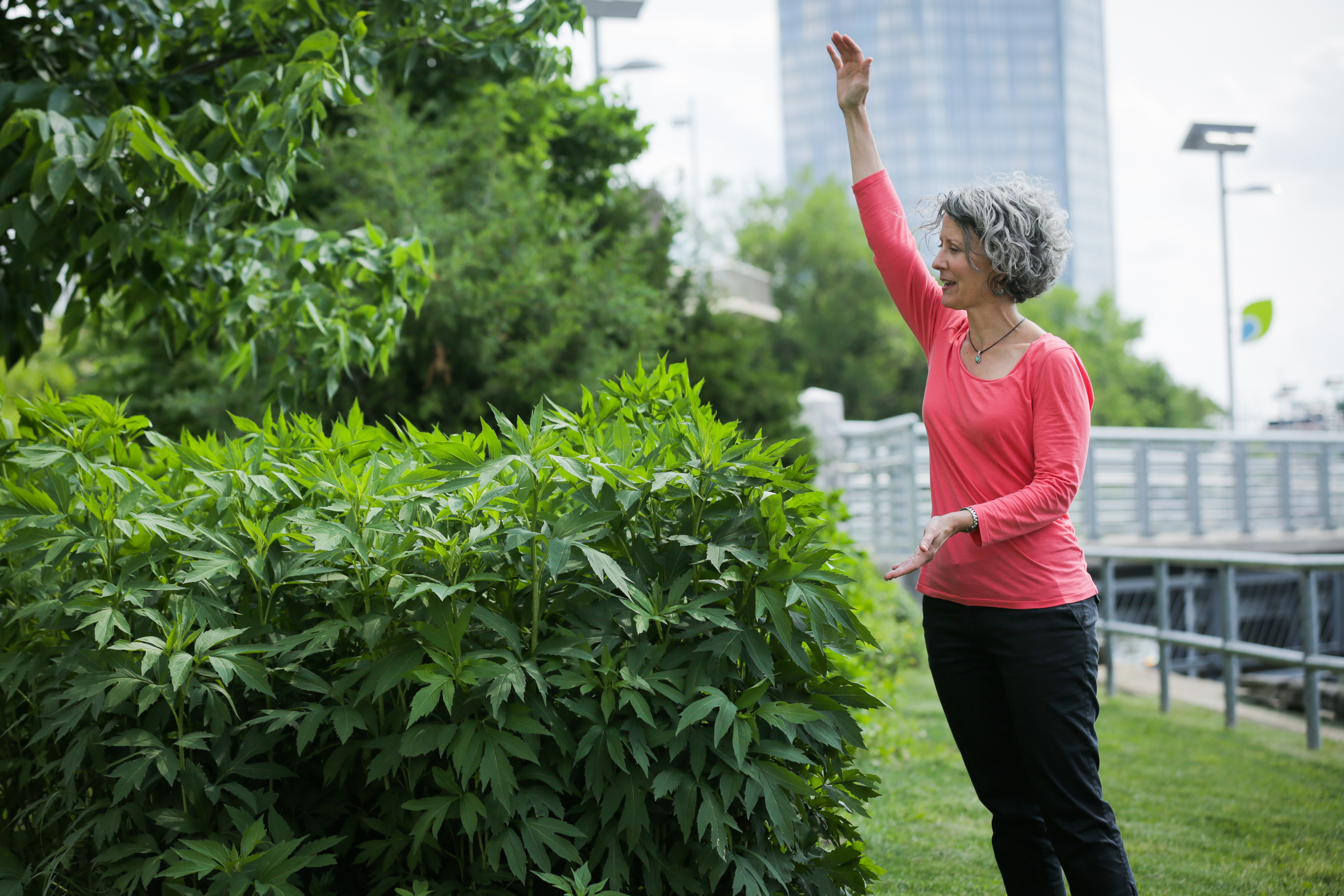
For years, Penn Fine Arts Lecturer Deirdre Murphy tucked away the idea of creating an art piece based on a river, long mulling over which of the world’s many rivers could be her perfect muse.
Then she remembered the Schuylkill River, right in her backyard, its ripples waving for attention. The pieces fell in place almost serendipitously.
Murphy happened upon a call for artists from the Penn Program in Environmental Humanities (PPEH), which was about to issue its second-ever round of awards as part of the Ecotopian Toolkit project, financially supporting projects that engage urban waters or explore ecological challenges in a creative way.
It was the perfect outlet to express what she’d envisioned.
“I had been wanting to do a long scroll print for a while, and base it off a river with that snaking, sinewy form,” Murphy explains. “I’d been looking at rivers as a really compelling shape for a while, but hadn’t actually found out how to integrate them into my work. It’s just always been at the periphery of ‘I want to do a river painting.’
“So, when this project came up, I was finally just like, ‘Oh gosh, here it is.’”
It was, she says, a chance to work on her “hometown river.”
Much of Murphy’s past work explores the migration patterns of birds and how they intersect with stars, human flight patterns, etc. Because the Ecotopian project asked that artists explore life in or around the water’s edge, the idea surfaced that she could study the migration of birds feeding and breeding along the Schuylkill’s edge—interlacing those studies with a 100-year lookback of the river’s form and health in West Philadelphia. She will, ultimately, marry those two concepts for her “Mapping Movements: The Invisible Highways of Urban Birds at the Water’s Edge” project by creating a woodblock print that layers the migration path of local songbirds with contrasting maps that show the history of the river’s edge.
For the ecological portion of her study, Murphy is using maps that date back to the early 1900s, drawn by insurance companies that worked with industrial businesses that were once commonplace along the banks. She is examining that previous outline of the Schuylkill Banks and comparing it to an up-to-date satellite outline of the banks, examining how the river has evolved.
“Is it receding? Is it swelling? Have we made big changes to it with damming and different kinds of human intervention? Those are some things I’m looking at,” Murphy says. “And then I’ll meet with scientists to find out what birds they’ve noticed, through their tracking, have either changed that used to be really common, but because of climate change now are not. And I perhaps may even be using birds [for the art] that no longer migrate up and down the Schuylkill.”
She will also be looking at plant life—“What we think of as weeds,” she says—that may indicate the species of birds the banks attracts, and, from an actionable standpoint, use that knowledge to understand how to preserve species along the river that depend on, for example, gooseberry plants for food.
“With the award, what they really want to do is look at contemporary ecological challenges, and how art can perhaps spark awareness and make a change,” Murphy says. “It’s to try and get public engagement up and bring awareness to the river and the species that reside on the river, or the banks of the river, and see what we can do from there.”
Murphy will spend part of her summer making the print out of a studio near the banks, culminating in a hands-on, public engagement workshop to be held in September, which, she says, will hopefully include a walkthrough of the river, a sort of “birding walk.”
Bethany Wiggin, founding director of PPEH, says the Toolmakers program was created to create a “cohort of like-minded artists working in the same space.” The water theme, meanwhile, recalls not just Philadelphia’s legacy as a port city, but an age of Lenape settlements made along rivers and creeks that, today, we consider urban waters.
The Ecotopian Toolkit is meant to put a more uplifting spin on how we see and care for urban waters.
“In a dark time, in a moment of extreme climate change and rapid planetary transformations, I think a lot of people—for good reason—feel gloomy, and with this project we wanted to think about ways of acknowledging the challenges that we face, but also point toward a place of inspiration,” Wiggin says. “To think of ways we could live in these mixed-up spaces, like the ones where our toolmakers are installing their projects.”
Award recipients, including Murphy, will visit Wiggin’s experimental seminar, “Liquid History and Floating Archives,” in the fall. On Wednesday, June 20, during the On Water Intensive Research Seminar—a collaboration between PPEH, the Academy of Natural Sciences, and Drexel University—Toolmakers Dylan Gauthier and Kendrea Sullivan will workshop the Floating Studio for Dark Ecologies, for which they, with Marina Zurkow, also received an Ecotopian award.








